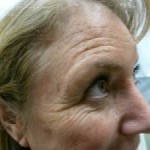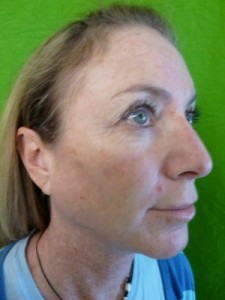Botox is a protein compound derived from the Clostridium bacteria. It is clinically known as botulium toxin, type A. Although it is associated with a type of food poisoning that results in muscle flaccidity and paralysis, researchers have found beneficial applications for it in medical and cosmetic procedures.
Botox was initially approved by the FDA in 1989 for the treatment of eye muscle spasms. An unintended consequence was a noticeable reduction in the wrinkles around the eyes caused by these muscle contractions. In 2000, it was approved for neurological movement disorders. Then in 2002, Botox finally received FDA approval for cosmetic procedures.
How Botox Works
The raw form of the botulinum toxin must first undergo a series of purification processes in acid precipitation. This converts it into a sterilized form so that it can be used as an injection. The end result is a powder that can be adjusted into precise dosage concentrations by medical practitioners.
Botox works by inhibiting nerve cells from releasing acetylcholine, a neurotransmitter that signals muscles to contract. It blocks the precise release points on the nerve cell that normally secretes the acetylcholine. Muscle contraction is frequently responsible for creating deep groves such as frown lines, laugh lines, crows feet, brow furrows and even lip wrinkles. So when facial muscles associated with these lines are relaxed, these creases are often drastically reduced in their appearance.
During the actual procedure, the practicing physician must carefully determine the appropriate injection sites . This ensures that the right nerves are targeted and the surrounding areas are unaffected.
Dysport
Dysport is also a type A botulinum toxin that works to inhibit muscle contraction through the acetylcholine release sites. It was approved by the FDA in 2009 for cosmetic usage. Prior to this, it was commonly used for anti-aging applications in Europe, South America and other regions of the globe for several years.
The Differences Between Botox and Dysport
Although Botox and Dysport are very similar to one another in how they function, there are slight structural differences between the two compounds.
On a molecular level, Dysport has fewer satellite proteins. As a result, the body is more tolerant to Dysport and breaks it down at a much slower rate than Botox.
There is some research which suggests that Dysport lasts longer than Botox. For example, a 2009 article published in the Archives of Facial Surgery described a study sponsored by the manufacturer of Dysport. In some subjects, the effects of Dysport were apparent for more than 13 months. The average durations for Botox is 3-4 months. Collectively, the results from such studies show mixed conclusions regarding the duration of these injections.
Another research study was conducted to compare the effects of Botox and Dysport on crows feet. Subjects were given Botox on one side of the face and Dysport on the other side. Dysport significantly outperformed Botox in reducing the appearance of crows feet lines.
The ultimate superiority of one brand over the other is still considered debatable. Many physicians allow their patients to choose between the two options, provided that there are no physiological restrictions in allowing this type of preference.
Los Angeles Patient Case Study on Botox
This patient in Los Angeles wanted to reduce the deep lines on her forehead as well as her crows feet, sowas recommended by Dr. Umar to correct these wrinkles.
The results are seen in these before and after pictures. Botox was able to smooth and reduce the lines on this patient’s forehead. A browlift effect was able to be achieved without surgery.
Here is the video on this case study
Fine Touch Dermatology Case Study on Dysport
Dermal injections are typically associated with older patients. However, this Los Angeles patient was not interested in erasing wrinkles. Instead she wanted to soften her facial expression. Overactive brow muscles produced prominent and a highly noticeable vertical pinch on her forehead. Dr. Umar recommended Dysport injections.
After the treatment, her facial expression improved dramatically.
Choosing Between Botox and Dysport
Choosing between Botox and Dysport should be done on a case by case basis with the guidance of a specialized physician, especially to determine any susceptibility to side effects. The overall benefits will be largely related to the unique needs and existing conditions of individual patients.


